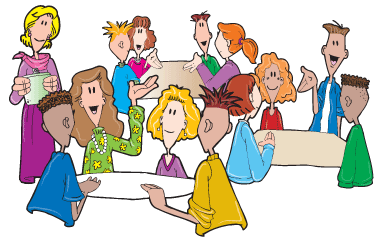A Learner’s Guide towards Learning and Developing Education
Cooperative Learning
Summary of Cooperative Learning
Cooperative learning refers to the structuring of classes into small groups. The members of these groups are dependent of each other in order to complete the given task (Teed, McDaris & Roseth, 2012). The particular components of co-operative learning are:
1) Positive Interdependence: Refers to the concept of “sink or swim together” where students will either succeed in completing the task or fail. This can be achieved when group members divide and share the work and roles needed to achieve a mutual goal.
2) Individual Accountability: This essence of individual accountability is based on the concept of “students learn together, but perform alone”. The goals of the task must be understood so that the group is more successful in achieving their goal, while individuals recognize what they are to contribute towards that success.
3) Face-to-Face Interaction: This form of learning is most effective when students seek to promote each other’s learning. This promotion can include explaining how to solve a particular problem, while connect prior knowledge to what they need to know in order to complete the task.
4) Interpersonal and Small Group Social Skills: Through cooperating with each other, students are able to learn both the “academic subject matter” and important life-based skills such as teamwork. Other skills can include demonstrating effective leadership, trust-building, communication, and conflict management.
5) Group Processing: After the task is completed, students are given time to analyze how effective their group was. This includes examining the performance of each group member’s social skills (Starting Point, 2010).
It is important to note that cooperative learning is not just about grouping students together and assignment them a task to complete. This is because students can achieve life-based skills through co-operative learning, including:
-
Develop critical-thinking skills to help improve memory.
-
Motivate students to participate more in class.
-
Learn the value of teamwork (Teed, McDaris & Roseth, 2012).
Teaching Strategies
Students are the Teacher: One particular strategy is beneficial to cooperative learning is to divide students into groups of five or less, while giving each member a unique “concept” from the same subject (Worksheet Library). After researching and gathering information for their particular concept, students are to then come back together and “teach” each other what they have learned (Worksheet Library). This strategy is useful for cooperative because students have to refer to each other in order to gain the necessary information needed to complete an assignment.
Debates: A debate can prove to be a beneficial form of cooperative learning, as the students are required to work together in order to gather necessary information and organize it to form convincing arguments. Dividing students into groups, where they have to decide who will research and develop a distinct argument for the topic, while working together to achieve success in a debate (Worksheet Library).
Giving Members Different Roles: Cooperative learning relies on every member of the group helping each other in order to achieve a common goal. One strategy that could support this is to assign each member a distinct role. Providing members with different roles will motivate them to complete the assignment as they feel that their contribution has become more important (Worksheet Library). Examples of roles include, but are not limited to:
-
“Secretary”: This member could record information and responses provided by their colleagues.
-
“Reporter”: This member speaks on behalf of the group and presents their findings to the rest of the class (Worksheet Library).
Digital Tool
Padlet - https://padlet.com/
“Padlet” is an “internet application” that allows users to express their thoughts on a common topic (Padlet Junction, 2015). Users can also add images, videos and files that support their opinions on the topic. This application would be a beneficial tool for cooperative learning as students can use it to organize their findings and other resources on to one website. Another benefit is that it is easily accessible for students at any time, which in turn means that they are not restricted to working on their assignment at school.
References
Padlet Junction (2015). What is Padlet? Retrieved November 10, 2015 from http://jn.padlet.com/article/57-what-is-padlet
Starting Point (2010). What is Cooperative Learning? Retrieved October 31, 2015 from http://serc.carleton.edu/introgeo/cooperative/whatis.html
Teed, R., McDaris, J., & Roseth, C. (2012). Cooperative Learning. Retrieved October 31, 2015 from http://serc.carleton.edu/econ/cooperative/index.html
Worksheet Library. 10 Tips for Cooperative Learning. Retrieved November 10, 2015 from http://www.worksheetlibrary.com/teachingtips/cooperativelearningtips.html




